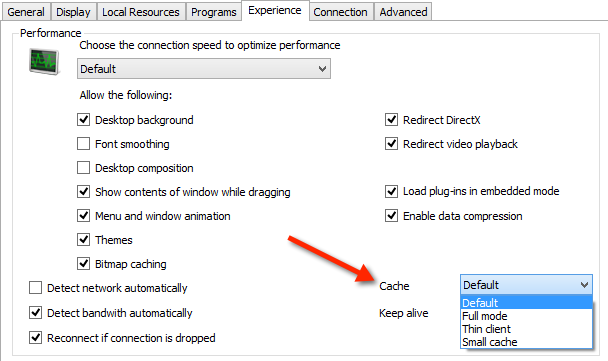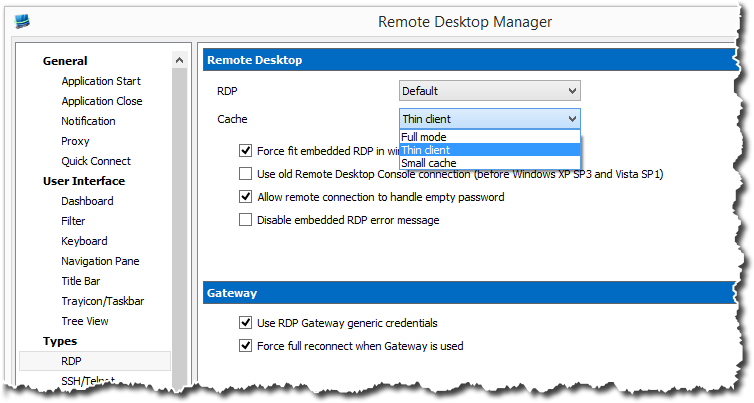Hello RDMers
As seen in a previous blog of ours: 32 bit vs. 64 bit versions of Remote Desktop Manager, RDP sessions using version 8 of the protocol, namely Windows 8 and Windows 2012, consume more memory than previous versions of the protocol. For those of you that open many sessions concurrently, this sometimes forced you to use the 64 bit version of Remote Desktop Manager.
Thanks to our friend Marc-André Moreau of AwakeCoding, the creator of FreeRDP (which we use in our Mac edition), we can give you a trick to reduce the memory footprint of those sessions. He has discovered that, by default, the RDP protocol will reserve a sizable chunk of memory right from the start of a session for caching purposes, but we have some level of control over that.In the Experience tab of the RDP session, there is a Cache setting that you can use to control the behavior. It's values are as follows:
- Default: uses the value set in File - Options - Types - RDP - Cache
- Full Mode: The protocol is full Windows 8 Remote Desktop protocol.
- Thin client: The protocol is limited to using the Windows 7 with SP1 RemoteFX codec and a smaller cache. All other codecs are disabled. This protocol has the smallest memory footprint.
- Small cache: The protocol is the same as FullMode, except it uses a smaller cache.
Choosing Thin client is therefore the choice that limits memory consumption the most, but will downgrade to the previous version of the protocol. You could try the Small Cache mode to see if its sufficient for your needs.
Obviously, if you wish to set this for all sessions, use File - Options to assign the default value, then in all of your sessions use Default. There you go, a nice hidden gem that gives us control over how the RDP protocol operates.
As always, let us know your thoughts by using the comment feature.







